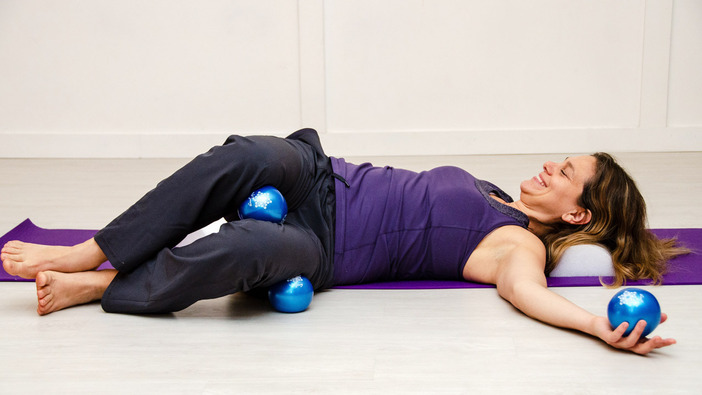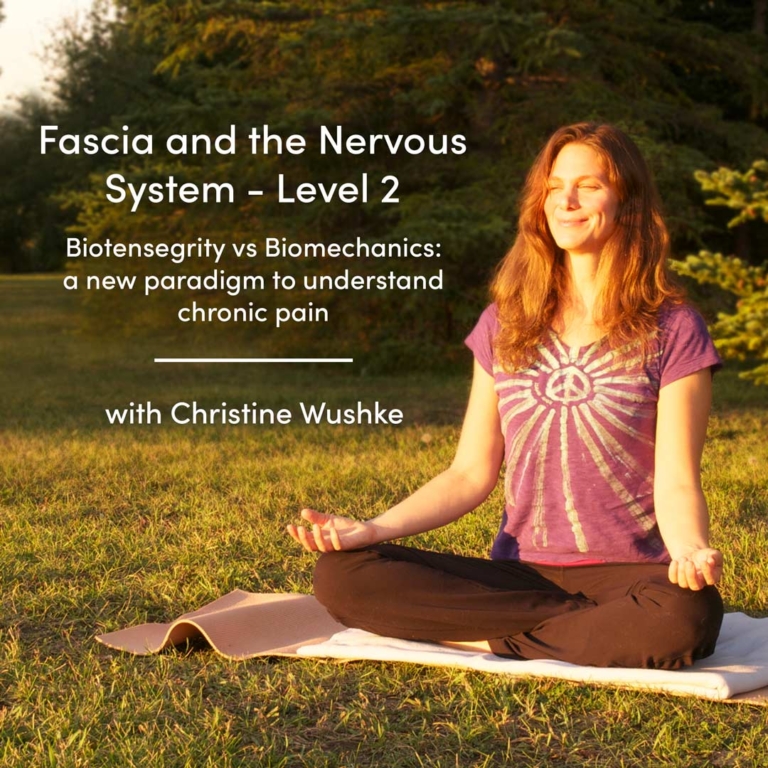
The power of gentleness
My personal chronic pain journey has led me to appreciate the power of being kind and gentle with my body.
I just finished watching a video from the Fascia Research Congress on fascia and pain, and it was fascinating! Research is telling us that fascia is actually much more sensitive to pain than muscles are. Not only is fascia much more sensitive to input, but we’re also learning that pain and threat are strongly linked… which means that the type of self-care tools you use matters.
Your nervous system is hard-wired to recoil and restrict in response to stress or threat. Using a hard plastic tool with rigid fingers is likely not going to induce a sense of either safety or relaxation, especially if you are already in pain. It will simply inflict more pain into already sensitized tissues. This, in turn, creates a feedback loop of more pain and, in many cases, more inflammation. Using a soft and gentle approach instead will send the message that it’s safe to let go and it’s okay to relax.
Studies also show that the ability to relax into mild sensation (e.g., light pressure) is very successful in pain reduction. While tensing or bracing in response to the fear of more pain can be counterproductive.
Give this a try:
Find a stress ball, or a vinyl toy ball from the dollar store. Make sure it is soft and has lots of give. Lie down on your back and place the tool in an area where there is tightness or pain. (Disclaimer: if you have a serious condition like bulging disk or nerve damage, seek the advice of a qualified professional before trying this.) Take a few seconds to ensure that you are comfortable enough to relax for a few minutes. If not, get up and grab a few blankets or pillows to use as bolsters, and settle in.
Now see if you can soften into the sensation around the ball. Focus on your breathing and allow yourself to think of some positive imagery for about 5 minutes. Bring to mind the last time you felt really happy or at peace, and focus on that memory and any feelings and images that come with it. Experiment with soft enjoyable music, or a YouTube video that sparks a sense of contentment.
After these 5 minutes of pleasant relaxation, remove the ball and continue to rest. Notice any changes in the quality of sensation around where the ball was.
Let me know how it goes!
Christine.
- For more exercises like this, please check out Christine's guided yoga program, Myofascial Yoga for Stress Reduction - 6 Myofascial yoga classes to release mental and physical tension and help you feel more relaxed, resourced and focused.
Train with Christine on the YogaEasy Academy

Tensegrity is a blend of the words ‘tensile’ and ‘integrity’ and refers to the balancing of the forces of tension and compression to create strength and stability.
The goal is to balance these opposing forces (tension and compression) and take advantage of their different qualities to enable us to enjoy freedom of movement, reduce pain, regulate emotions, and optimize our energy.
Through a combination of lectures and experiential practices you will learn how to apply the concept of biotensegrity to alleviate chronic pain, discomfort and restrictions in movement. We’ll also widen the scope and explore how these principles can support us to trust our own bodies and strengthen our relationship with others. Click here for full details.
